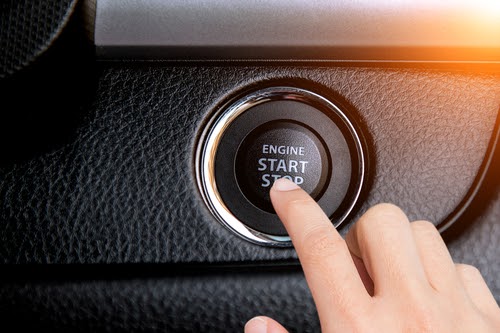The remote proximity key – also known as “keyless entry” – allows you to open your vehicle and start it without touching the electronic key fob, a small device that transmits a code to a computer in the car when in close range. In vehicles with keyless, push-button ignition, the fob is recognized by the vehicle to authorize its operation. The fob can stay in the driver’s pocket or purse, as the ignition switch is a button on the dash. This increasingly common technology has become a part of everyday cars, not just luxury models as it once was. Some car manufacturers even have smartphone apps, whose functions include remote starting.
The Dangers of Proximity Keys and Push to Start Cars


While keyless entry and push-button ignition technology is convenient, it is not without dangers. In fact, a recent New York Times report found proximity keys could be partially responsible for dozens of fatalities in the United States. The article tells the story of a Florida man who drove his SUV into his home garage and entered his house with the key fob, believing that the car was turned off. About 30 hours later, the man was found dead, having been killed by the carbon monoxide that engulfed his home while he was asleep. According to the Times , the man was among at least 25 people who were killed by carbon monoxide in the United States since 2006, after a keyless-ignition vehicle was accidentally left running in a garage.
Safety watchdog groups have documented instances of drivers pushing the button to stop the engine before putting the vehicle in park, allowing their vehicle to roll away. Many car systems emit warnings or even shut down after the driver exits the car, and the fob is detected leaving with them. You could leave the fob in the car’s cup holder, for example, then after you exit, the vehicle doesn’t know to turn off.
Hybrid cars pose problems as well. They are very quiet when in electric mode – which they are often in when sitting still after parking. A driver can assume the car is shut down because the engine isn’t running. However, the vehicle may not be truly off. The engine could restart itself, to adjust the climate control, for instance, and therefore send carbon monoxide into the home. Make sure that whenever you enter your home, any car parked in the garage is shut off. Being extra careful about this can prevent a tragedy.

Allow the Experts to Duplicate or Replace Your Fob or Key
If you need a new key or fob for your vehicle, you need a highly skilled and trained professional to ensure it will start your vehicle. At Brothers Locksmith, our key replacement services are affordable and reliable. We can get the job done much quicker – and cheaper – than the dealership. Call Brothers Locksmith today for help with:
- transponder keys
- fobs
- keyless remotes
- dealer chip keys programmed on-site
- remotes programmed
- electronic keys
- key replacements
- VATS keys
We are available 24/7 to meet your automobile key needs. Brothers Locksmith technicians can create the key you need on the spot. Our technicians are trained to program transponder, VAT, and smart keys for any vehicle. Our work is of the highest quality – guaranteed!
Call Us Any Time!








